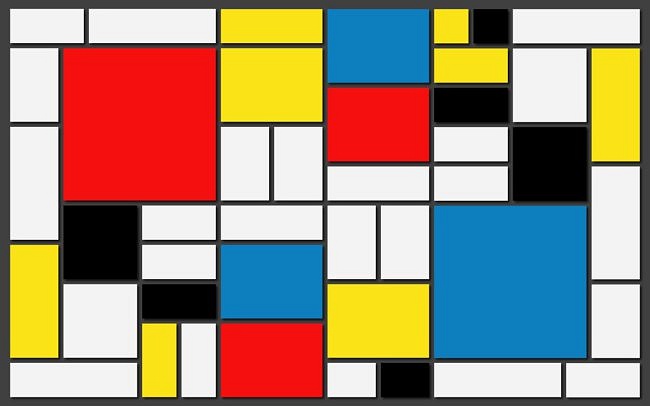1917 - 1932
Neoplasticism

description
1917 – 1932
Neoplasticism, also known as De Stijl (“The Style”), was a Dutch artistic movement founded in 1917 in Leiden. It united artists, which grouped around the magazine “De Stijl”. The magazine and the art movement were founded by Theo van Doesburg and Pete Mondrian.
“The Style” is characterized by abstract painting, large rectangular planes and the primary colors of the spectrum. Being a deeply spiritual man, Mondrian was determined to develop a universal visual language. He gradually reduced the elements into a grid of lines and basic colors by the principle of harmony. The artist saw lines and colors as elements possessing opposing cosmic forces. The vertical lines embodied the energy of the sun rays, while the horizontal lines were associated with the motion of the Earth. Yellow symbolized the energy of the sun, blue was a symbol of infinite space, red symbolized substance. The style of Mondrian was inspired by the theosophical teachings of mathematician and philosopher Mathieu Hubertus Josephus Schoenmaekers.
Key artists:
Piet Mondrian
Theo van Doesburg
Key ideas
– Neoplasticism was based on the philosophical system of two basic contradictions forming our earth and everything earthly. According to philosopher Mathieu Hubertus Josephus Schoenmaekers, this is “the horizontal force line of the Earth around the Sun and the vertical force line of the earth, which has its origin in the center of the Sun. “
– The pictures contain only vertical and horizontal black lines intersecting at right angles.
– Only three primary colors (red, blue and yellow) and two non-colors (black and white) are allowed.
description
Dutch artist who practiced painting, writing, poetry and architecture. The founder and leader of “De Stijl” (“Style”), a Dutch artistic movement also known as Neoplasticism. As a poet he wrote under the pseudonym I. K. Bonset, and as a philosopher – the pseudonym Aldo Kamini.Van Doesburg was an architect by profession; he learned painting on his own. The artist created his works after long and careful calculation, using mathematical formulas. According to the theory of “Style”, compositions were to be constructed in accordance with the proportional relations between the geometric fragments that are included in their composition.
1883 - 1931
